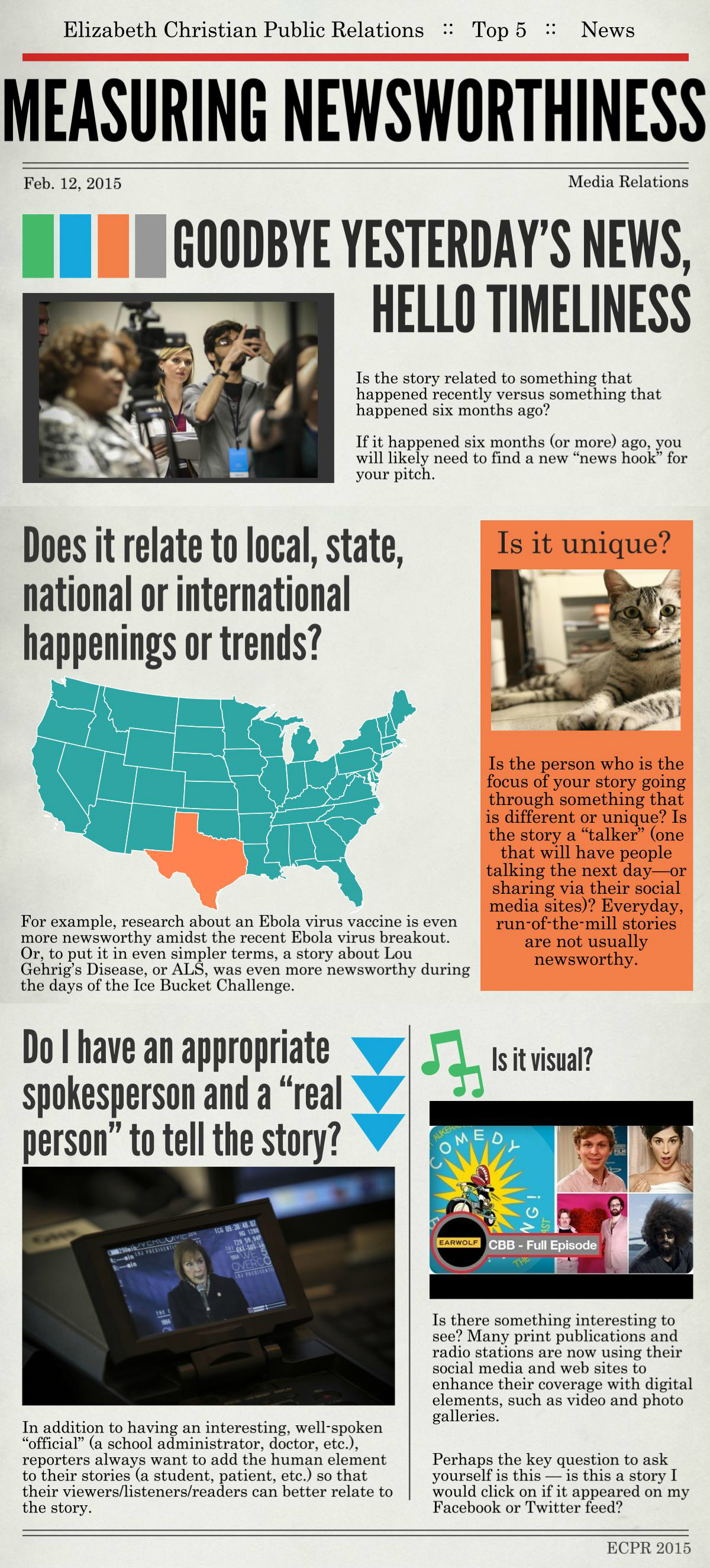Media relations is a key component of PR—and a large part of media relations is knowing which stories or events are, in fact, newsworthy. As a former television journalist, I have a unique insight when it comes to determining newsworthiness. After all, I was on the receiving end of story “pitches” for more than a decade.
When it comes to measuring the newsworthiness of a story or event—or educating clients about the news value of an initiative—ask yourself or your client:
1. Is it timely? Is the story related to something that happened recently (versus something that happened six months ago)? If it happened six months (or more) ago, you will likely need to find a new “news hook” for your pitch. (Is a patient who underwent a new treatment six months ago preparing to run a marathon this weekend?)
2. Does it relate to local, state, national or international happenings or trends? For example, research about an Ebola virus vaccine is even more newsworthy amidst the recent Ebola virus breakout. Or, to put it in even simpler terms, a story about Lou Gehrig’s Disease, or ALS, was even more newsworthy during the days of the Ice Bucket Challenge.
3. Is it visual? Is there something interesting to see? Are you releasing hundreds of balloons to commemorate an initiative? Will there be cute kids—or even animals—wearing Halloween costumes at your event? These questions used to apply mainly to television (and print publications, for photos), but because many print publications and radio stations are now using their social media and web sites to enhance their coverage with digital elements, such as video and photo galleries, this is almost always a factor to consider.
4. Is it unique? Is the person who is the focus of your story going through something that is different or unique? Is the story a “talker” (one that will have people talking the next day—or sharing via their social media sites)? Everyday, run-of-the-mill stories are not usually newsworthy.
5. Do I have an appropriate spokesperson—and a “real person” to tell the story? In addition to having an interesting, well-spoken “official” (a school administrator, doctor, etc.), reporters always want to add the human element to their stories (a student, patient, etc.) so that their viewers/listeners/readers can better relate to the story. (That’s not to say “officials” aren’t people—they’re just speaking on behalf of an organization.)
Perhaps the key question to ask yourself is this—is this a story I would click on if it appeared on my Facebook or Twitter feed? If the answer is yes, your client may, in fact, have a good story to tell!
-Erin Ochoa
Vice President, Elizabeth Christian Public Relations



